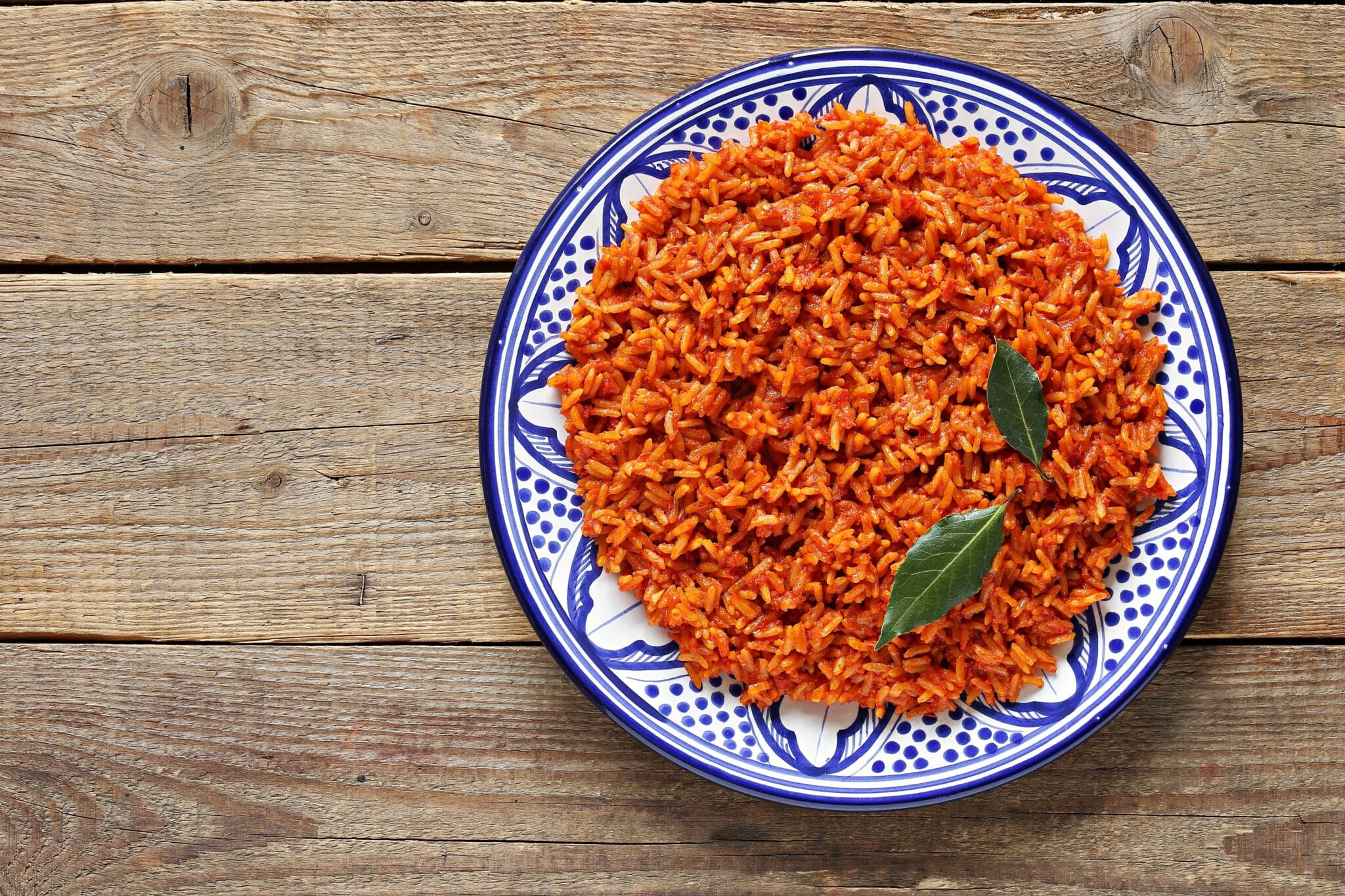Jollof rice, a dish that has become synonymous with West African cuisine, is a flavorful meal enjoyed by many. Its rich history and cultural significance make it more than just a dish—it’s an experience.
Our team at Remitly created this guide as part of our series that celebrates the traditional foods of our global customers.
The Origin of Guinea-Bissauan Jollof Rice
The origins of Jollof rice are often debated. Some believe it originated in Senegal, where the Wolof people—a major ethnic group—first prepared it.
Others argue that its roots lie in the ancient Songhai Empire of Mali. Regardless of its exact origin, there’s no denying the impact this dish has had on West African cuisine.
Over time, Jollof rice spread across West Africa and beyond. Each region added its unique touch to the recipe, resulting in diverse variations of this beloved dish.

Ingredients Used in Jollof Rice
At its core, the Guinea-Bissauan jollof rice is a one-pot dish made from rice cooked in a tomato-based sauce. The sauce typically includes onions, tomatoes, chili peppers, and various spices such as thyme and curry powder.
Protein options vary widely—from fish to chicken to beef—and are often included based on personal preference or regional availability. Vegetables like peas and carrots may also be added for extra flavor and nutrition.
A Simple Guinea-Bissauan Jollof Rice Recipe
Jollof rice is a dish that can be tailored to your taste. Here’s a basic recipe to get you started.
Ingredients:
- 2 cups of long-grain parboiled rice
- 4 large tomatoes, chopped
- 1 large onion, chopped
- 2 red bell peppers, deseeded and chopped
- 1 Scotch bonnet pepper (optional)
- 3 cloves of garlic, minced
- 1 teaspoon of thyme
- 1 teaspoon of curry powder
- Salt to taste
- Vegetable oil for cooking
- Chicken or fish (optional)
Instructions:
- Rinse the rice under cold water until the water runs clear. Set aside.
- Blend the tomatoes, onions, bell peppers, and Scotch bonnet pepper into a smooth paste.
- Heat some oil in a pot and add the minced garlic. Sauté until fragrant.
- Add the blended tomato mixture to the pot along with thyme, curry powder, and salt.
- Let this simmer on medium heat until it reduces and thickens.
- If using protein, season it with salt and pepper then brown it in another pan before adding it to the sauce.
- Add the rinsed rice to the pot and stir well so that each grain is coated in sauce.
- Cover with broth or water—just enough to cover the rice—and let it cook on low heat until tender.
Remember: The beauty of Jollof rice lies in its flexibility—feel free to adjust ingredients based on your preference.
Variations of Jollof Rice Across West Africa
While there are common elements in every pot of Jollof rice—rice, tomatoes—the variations across different regions are fascinating. In Nigeria, for example, Jollof rice is often cooked with long-grain parboiled rice and includes a variety of meats.
In Ghana, the preferred rice is usually fragrant basmati, and the dish often features a smoky flavor from being cooked over wood fire. Meanwhile, in Senegal—the possible birthplace of Jollof—fish is commonly used as the protein.
Celebrations and Festivals Featuring Jollof Rice
Jollof rice isn’t just food—it’s celebration. From weddings to naming ceremonies to religious festivals, this dish is a staple at most West African celebrations.
One notable event is World Jollof Rice Day—celebrated on August 22nd each year—to honor this iconic dish. On this day, people across West Africa—and indeed around the world—cook their versions of Jollof rice to celebrate its cultural significance.
Popular Pairings with Jollof Rice
Jollof rice can be enjoyed on its own but it also pairs well with various side dishes. Fried plantains—a sweet contrast to the spicy rice—are a popular choice. Others prefer to serve it with coleslaw or a simple green salad for added freshness.
For protein, grilled chicken or fish are common accompaniments that complement the flavors of the dish beautifully.
Exploring the Global Influence of Jollof Rice
Today, you’ll find Jollof rice not just in West Africa but in kitchens around the world. It’s appreciated for its robust flavors and versatility, and has been embraced by various cultures.
From high-end restaurants to home kitchens, this dish continues to win hearts globally. Its journey from a regional staple to an international favorite is a testament to its enduring appeal. As more people discover Jollof rice, its global influence only continues to grow.
Guinea-Bissau Cuisine: A Melting Pot of Flavors
Guinea-Bissau’s cuisine reflects its rich history and diverse cultural influences.
Seafood Staples
Given its coastal location, seafood plays a significant role in Guinea-Bissau’s cuisine. Fish is often grilled or used in stews, while shrimp and other shellfish are common ingredients in many dishes.
Rice-Based Dishes
Rice is a staple food in Guinea-Bissau. It’s often served with fish or meat and flavored with local spices. Jollof rice, as mentioned earlier, holds a special place in the country’s culinary landscape.
Fruits and Vegetables
Fruits like mangoes, papayas, and oranges are abundant in Guinea-Bissau and often enjoyed fresh. Vegetables such as okra, sweet potatoes, and cassava also feature prominently in the local diet.
Influences from Portugal
As a former Portuguese colony, some aspects of Guinea-Bissau’s cuisine reflect Portuguese influences. This can be seen in the use of certain spices and cooking techniques.
In conclusion, Guinea-Bissau’s cuisine offers a unique blend of flavors that reflects its diverse cultural heritage. From seafood to rice dishes to fresh fruits and vegetables—there’s something for everyone to enjoy.
Visit the homepage, download our app, or check out our Help Center to get started.